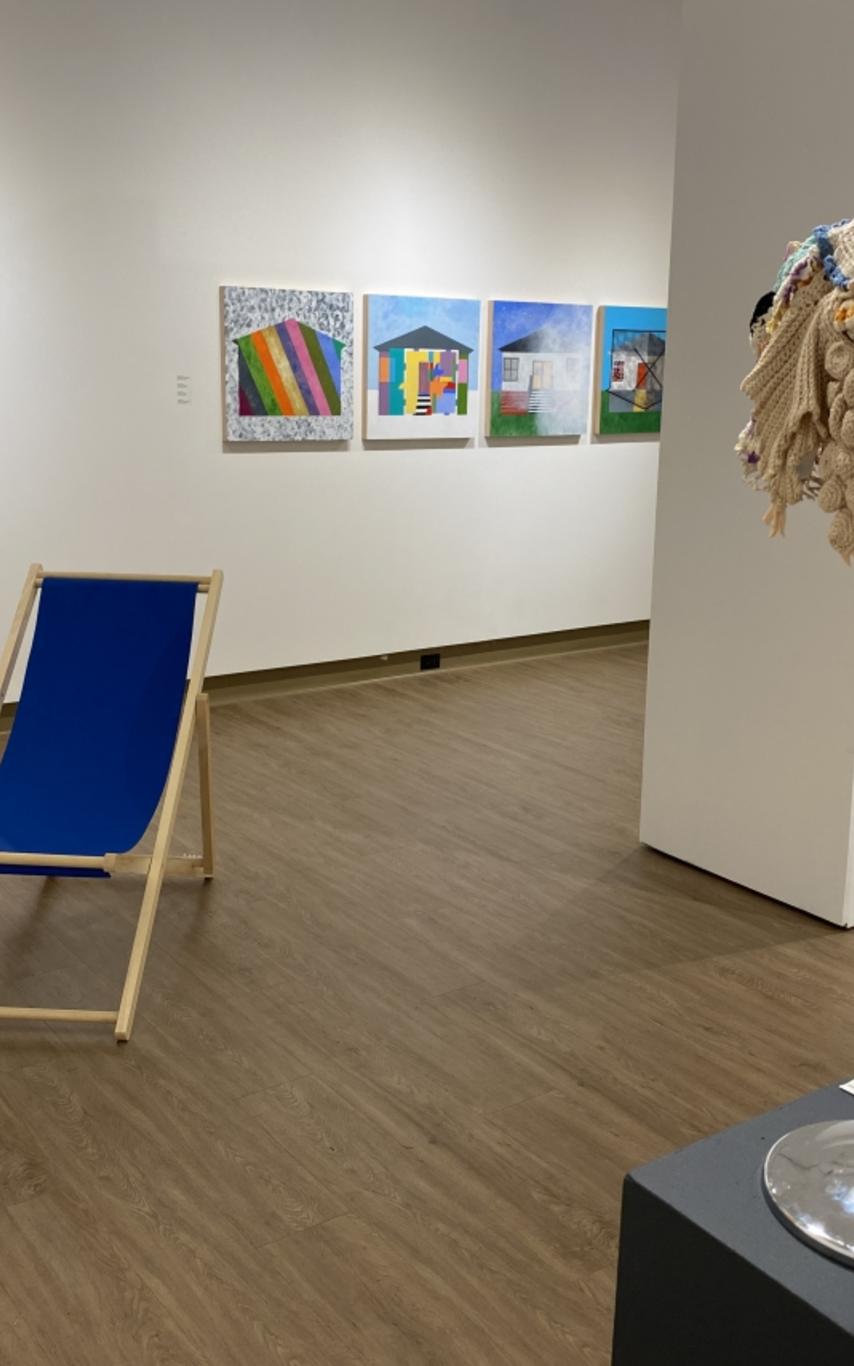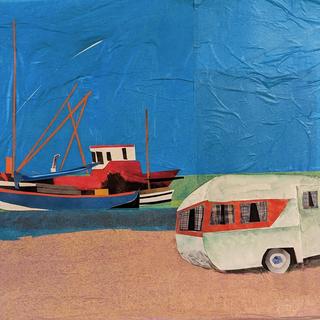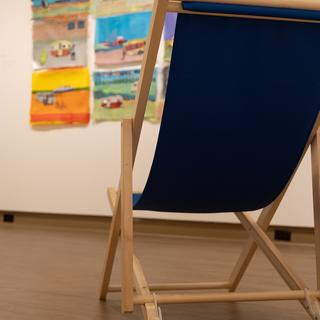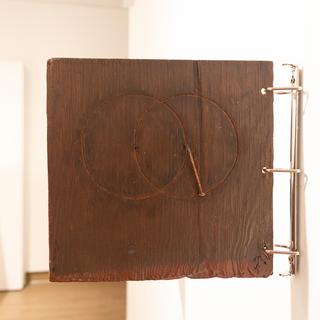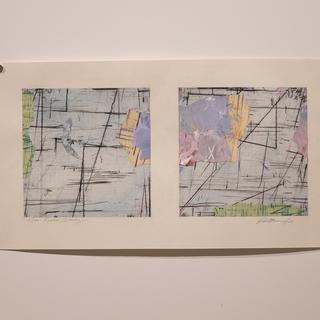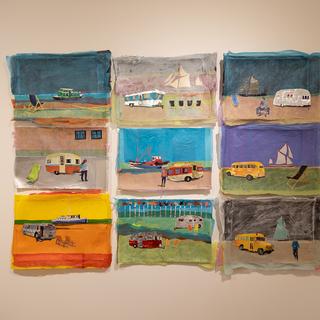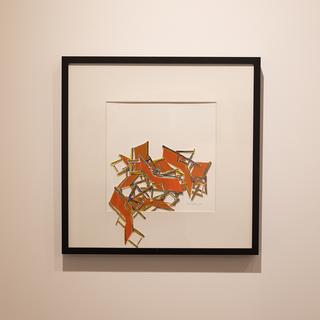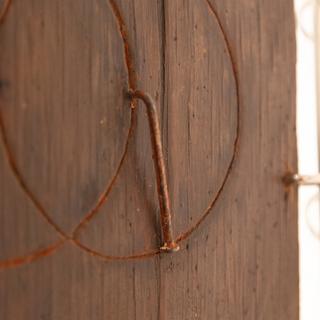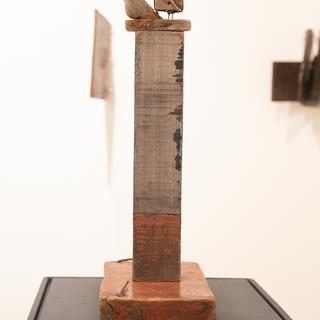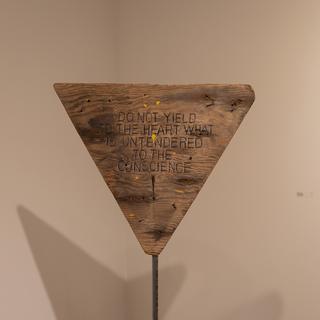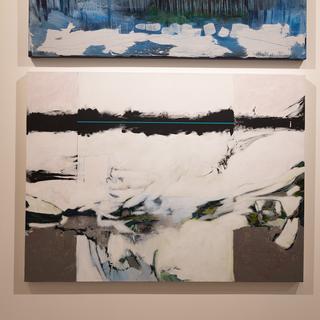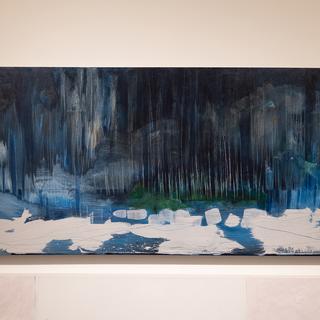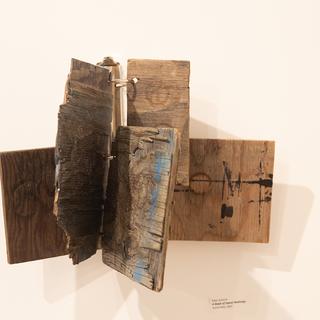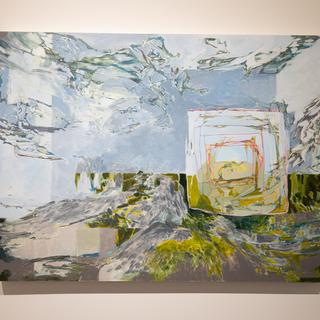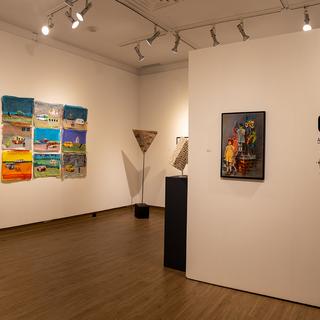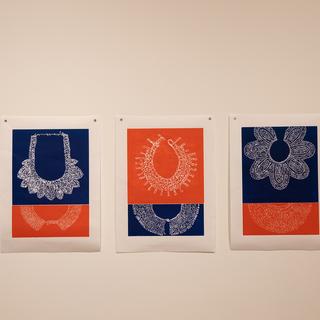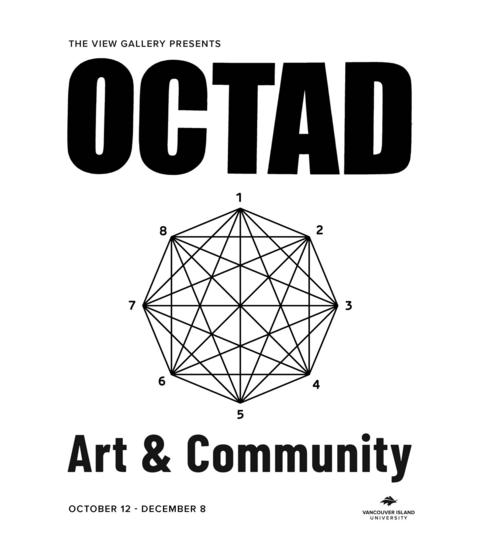Good Company
Sustaining a visual art practice can be challenging. Having a community of others who are also committed to practicing their skills of production, experimentation and ideation in a focused and intentional way is so important. If the members of this community are also willing to share their critical reflection, their insight and encouragement with you in an ongoing and supportive manner, this is rare. When artists can find themselves in good company like this they are indeed fortunate.
It is a great teaching opportunity to offer our students: the importance of creating and maintaining relationships that support an art practice post art school graduation, and the fruitful outcomes that can result.
It has been a great pleasure to visit these eight artists in the spaces in which they create. To have the opportunity to see and hear what activates and drives an artist’s production is in fact one the most rewarding aspects of curatorial work. I would like to acknowledge the eight artists of Octad for opening up their spaces to me and inviting me into their creative processes.
I would also like to thank Marie Leduc who graciously agreed to write the essay for this publication. Marie is a writer and an art historian whose ongoing discussion group/Substack feed, Making and Meaning is always filled with great questions and offers deep insight into how and why contemporary art is relevant in our present cultural moment.
In addition, we offer much gratitude to Happy Amarkah for his photographic expertise and Kiara White for her design prowess on this booklet, and to Adrian Robertshaw for the beautiful letter press work on the cover.
Chai Duncan
VIEW Gallery Curator
Department of Art and Design
Apprehending the World
by Marie Leduc
The true subject of the work of art is none other than the properly artistic manner of apprehending the world, that is, the artists themselves, their manners and styles, those infallible marks of the mastery to which they owe their art.[1]
Octad is an exhibition of eight different ways of apprehending the world. Eight artists, each bringing six decades or more of lived-experience, have come together to share their work in the community. Their artistic sources are gleaned from the land around them, from the place they live, from the objects they find, from the people who move through their lives, and from the events, joyous and catastrophic, that shape our human experience. From these, the artists have found their "manner" and "style," their own way of expressing how they apprehend the world.
The land is an especially strong presence in many of these works. The seashore and estuaries of Vancouver Island provide a template for Laurel Karjala to explore our transitory sense of place in nature. The narrow inlets, estuaries, and fjords of Vancouver Island with their ever-changing weather and tidal patterns are elusive subjects. In paintings and ink drawings, Karjala attempts to capture the liminal passage between seasonal changes, night and day, and near and far. Only the horizon is constant and provides an anchor in works such as Horizon IV - Winter (2022) and Juncture II (2022). The horizon, however, like our own sense of being in the world, is evasive. It is ever present but never fully realized.
The deep coniferous forests of Vancouver Island are the starting point for Ted Polkinghorne's paintings and drawings. The forest is a chaotic muse of lines and shapes that he then renders into his own compositions. Polkinghorne often begins by working very small on paper with coloured conté and bits of paper collage. He then translates drawings like Double Fields (2021) to larger wood surfaces which he works over, scraping, sanding, and gouging to bring out the unique patterns of wood and paint. The final works, such as Three Graces (2021-23) and Field Extensions (2023), are ultimately not direct renderings of what he sees, but rather his impression, or apprehension, of the unexpected patterns and beauty of the forest.
The sea and sky form the bucolic backdrop to Tony Martin's beach chairs, boats, and holiday trailers in Alternative Living (2023). These languid images evoke a hot summer afternoon sitting on a beach before a calm sea. You can almost hear the waves gently licking the shore. Martin crafts these idyllic scenes with a collage of layered tissue paper that creates the soft haziness of summer while bits of shiny paper glint like the sunlight. The unfinished edges of the works seem to flutter and give every appearance of impermanence, much like a brief sojourn away from our everyday cares and concerns.
The land is again a source of inspiration for Heather Thomas. Surge (2017) hangs down like a reversed geyser. The diaphanous blue fabric spills across the floor like the coming surge of seawater that will inundate our coastline as global warming transforms the planet. The patterned fabric has its own elegance and innocent beauty that belies the reality of this global catastrophe. Only the printed image - a map of Puget Sound after the rise of the ocean - hints at the coming deluge.
Donna Mattila finds her muse in the urban landscape. She explores Nanaimo’s old city, photographing and collecting images of the modest houses built in the early 20th century. These are simple structures, all following the same gable-roofed design. Over the years, each house has been customized and individualized by the families who have made them their homes. In her series of four paintings, Dream Home (2003), Mattila tries to capture something of the hopes and dreams of these families. She starts with the buildings' classic shape, takes it apart, and then rearranges the pieces into a colourful abstract language. Like the many renovations that have transformed these buildings, Mattila's paintings bring a renewed vibrancy to these iconic forms that populate our urban landscape.
The human body, itself, rarely appears in the work of these eight artists. Instead, our human presence is more often represented in the objects and architectural structures we make and leave behind. Donna Nona scours Vancouver Island thrift shops for objects that others no longer want and re-purposes them by combining them in unexpected ways. Her Doily Box (2019-2022) series combines lace fabric with common cardboard boxes to form new sculptural objects that highlight the intricate fractal patterns of the crocheted doilies. Anthropomorphic or Pathetic Failure (2021) brings together a collage of fabric and handmade cross-stitch projects that together produces a jarring and humorous mash-up of "low-brow" taste. And, in a series of miniature sculptures, Nona introduces tiny human figures into different types of cases – from a cell phone cover to a Louis Vuitton change purse – making us question their very purpose and value. Nona's unexpected interventions revise the meaning of these simple objects but also spark our memories of other times and places.
A lace pattern also provides Heather Thomas with the inspiration for her print series, Arc of Dissent (2022). The patterns reproduce the trademark collars worn by American Supreme Court Justice, Ruth Bader Ginsberg with her judicial garments. Reproduced and combined with colour in a formal composition, the feminine delicacy of the lace exemplifies, for Thomas, both the beauty of a woman's presence in a powerful place of justice and the hope for peaceful resolutions to the world's many conflicts.
Wandering the beaches of Vancouver Island, Peter Achurch rescues the remnants of human-made objects, the fragments of boats, docks, and industrial constructions that have long been battered by the waves and bleached by the sun. He scrapes away the seaweed, the rust, and the rot, and lovingly burnishes the surfaces giving these sea-washed remains a new life, a new identity. Achurch sees this as an act of "sympathetic restoration," a renewal that realizes the hidden beauty in the incompleteness of each worn fragment. He then responds to the unique shapes, surfaces, and markings of these new objects. Some he brings together into a sculptural form while others, such as Amoire/Moire (2023) and Thorns (2023), he turns over like the page of a book and leaves his own trace, in words.
Of all these artists, only Denise Tierney makes the human form her actual subject. For Tierney, the figure provides a way to explore human character, traditions, and behaviours. Her Women in Chairs (2022-23) portraits convey the individuality of the sitters through their clothes and gestures. Likewise, the Party Hats (2022) series captures the innocent exuberance of children who are not yet aware of adult anxieties and concerns. Unclothed and depicted at nearly life-size, the human figure is even more compelling. In Introvert's Dilemma (2023) the bodies are androgenous cyphers. The lack of clothing leaves no clues as to who they are or what they are doing. Instead, we must read their gestures and the juxtaposition of colours to glean the meaning of their expressive interaction.
Each of these artists, through their lives and artistic practice, have found a way to express something of their experience and apprehension of the world. Like most artists in Canada, they have done so while working to support themselves and their families. Despite this challenge, they have been driven to continually shape and mould their experiences into unique objects. With Octad, they bring these objects to the community as art.
Marie Leduc
09/23
Marie Leduc is an art historian and writer who holds an interdisciplinary PhD (art history and sociology) in Visual Art and Globalization from the University of Alberta. She has written reviews, interviews, and articles on contemporary art and is the author of Dissidence: The Rise of Chinese Contemporary Art in the West (MIT Press, 2018). Her research explores the making and meaning of contemporary art - how institutions, curatorial strategies, and art discourses identify and valorize objects as art.
[1] Pierre Bourdieu, The Rules of Art: Genesis and Structure of the Literary Field, translated by Susan Emanuel (Stanford: Stanford University Press, 1996), 300.
